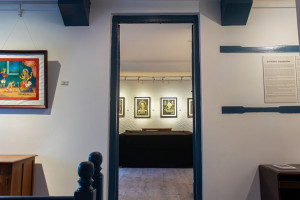Arts
Compassion on canvas
Tibetan Thangka master and contemporary artist Anay Ngawang Chodak’s ongoing exhibition explores the depths of compassion and wisdom in humans.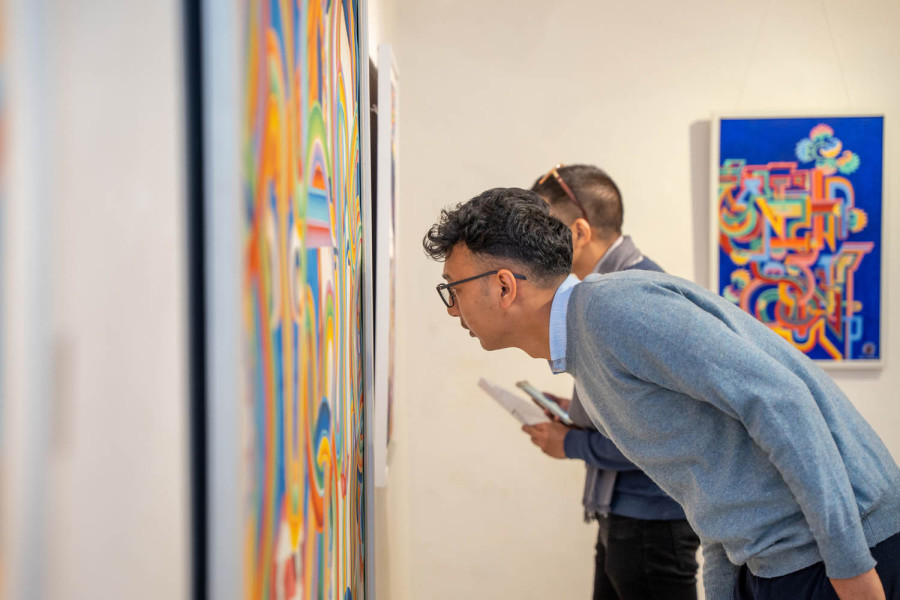
Anish Ghimire
In the quiet corners of Kathmandu, a man with his brush and a box of colours is illuminating the rich heritage of Tibetan traditional thangka art while carving a niche for himself in the contemporary art scene.
Born in 1980, Anay Ngawang Chodak is a distinguished Tibetan traditional thangka master and contemporary artist known for his deep roots in Buddhist art. Chodak’s hands have breathed life into two sets of 32 thangkas, gifts to esteemed figures like the 14th Dalai Lama. Notably, he has also completed a thangka mural in the sanctum sanctorum of the three-story Great Stupa in Tawang, Arunachal Pradesh, India.
For Chodak, art becomes a medium for exploring the depths of compassion and wisdom in our contemporary existence. His ongoing exhibition at the Siddharta Art Gallery at Baber Mahal Revisited, titled ‘Compassion and Wisdom in a Contemporary World,’ invites art lovers into a realm of mesmerising abstractions. It serves as a visual symphony that resonates with the profound symbolism of interconnectedness.
Chodak’s art is rooted in the ancient Nalanda tradition from India—his creations resonate with influences from Newa Paubha art, the Kashmiri style of Alchi art and Tibetan art. These diverse influences coalesce into a unique and modern interpretation, with a special focus on portraying female energy as a divine source of wisdom.
His canvas makes viewers think this is where the past meets the present, as the strokes of tradition blend smoothly with contemporary expression. The result is an arresting visual language that speaks to modern sensibilities, creating a bridge between the old and the new.
The exhibition doesn’t just feel like a display of art; it is an invitation to introspect through meditative art. Chodak’s creations serve as a colourful gateway into the intricacies of Buddhist philosophy, where the illusion of separateness fades, and the interconnected threads of existence become apparent.
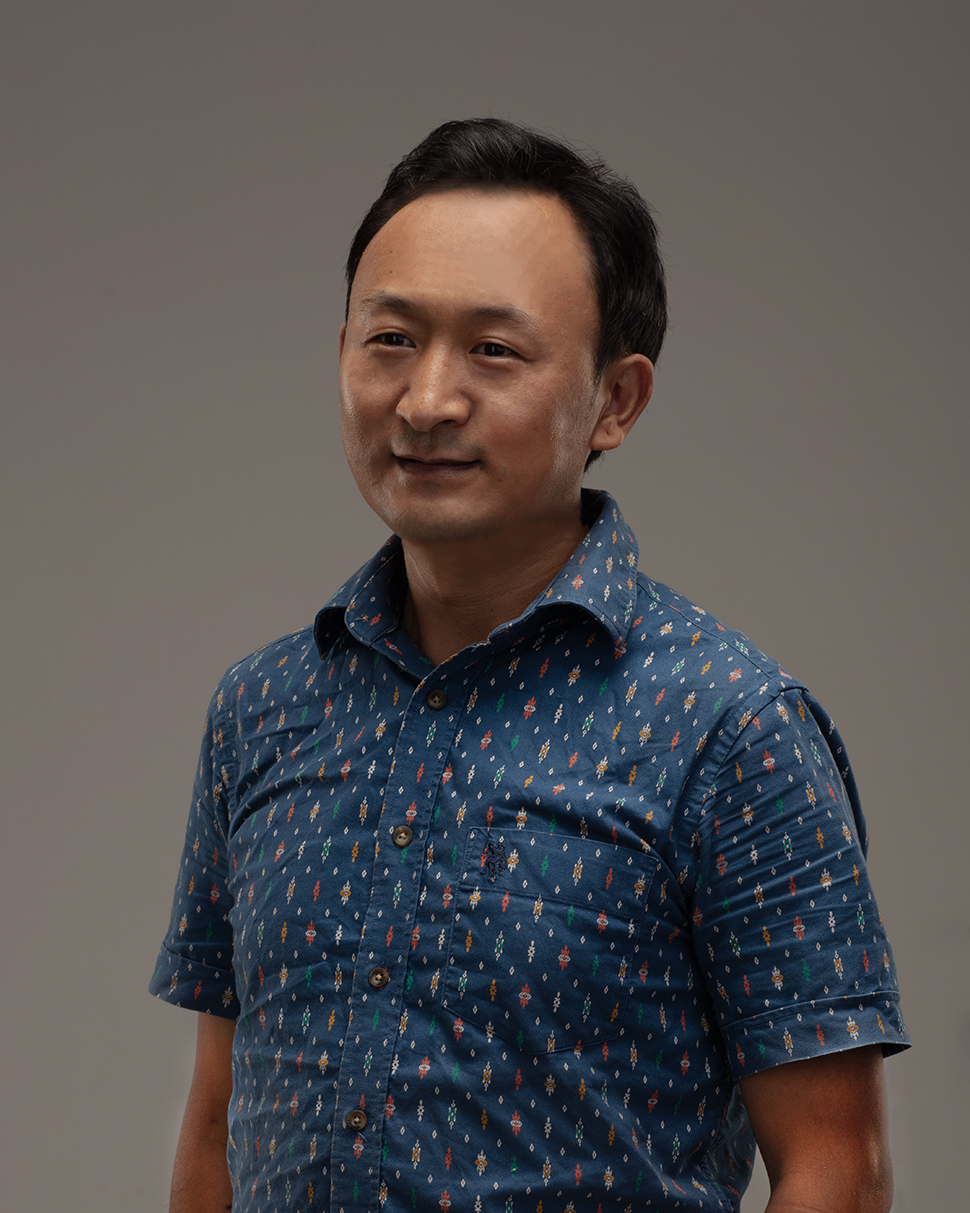
Chodak’s creations are full of symbolism, each stroke deliberate, each element filled with a deeper meaning. The flowers, meticulously portrayed, symbolise the perpetual freshness of love and compassion. He shares, “The main theme of this exhibition is interconnectedness; we all are connected to each other somehow.”
When asked about his most cherished artwork in the exhibition, he walked towards the ‘Ama’ painting. In nuanced strokes and vibrant hues, he encapsulates the closeness of a mother to her child. “My main message is that we can love each other the same way a mother loves her child. We should spread the message of love, and that is what I am trying to do,” he says.
Chodak’s plea for love echoes through the gallery. His commitment to his craft is personal and is a daily devotion that goes beyond mere artistic expression. “I am staying in the present and focusing on my work because I cannot go a day without it,” he reveals.
His artistic alchemy extends to the materials he carefully selects. He frequently uses Japanese mineral pigments, French gouache paints, oil, acrylic and 24K gold. The canvas itself is not just a surface; it’s a choice that adds depth and richness to his works. From traditional cotton to handmade Tibetan cotton and French cold and hot-pressed paper, each material contributes to the narrative woven on the canvas.
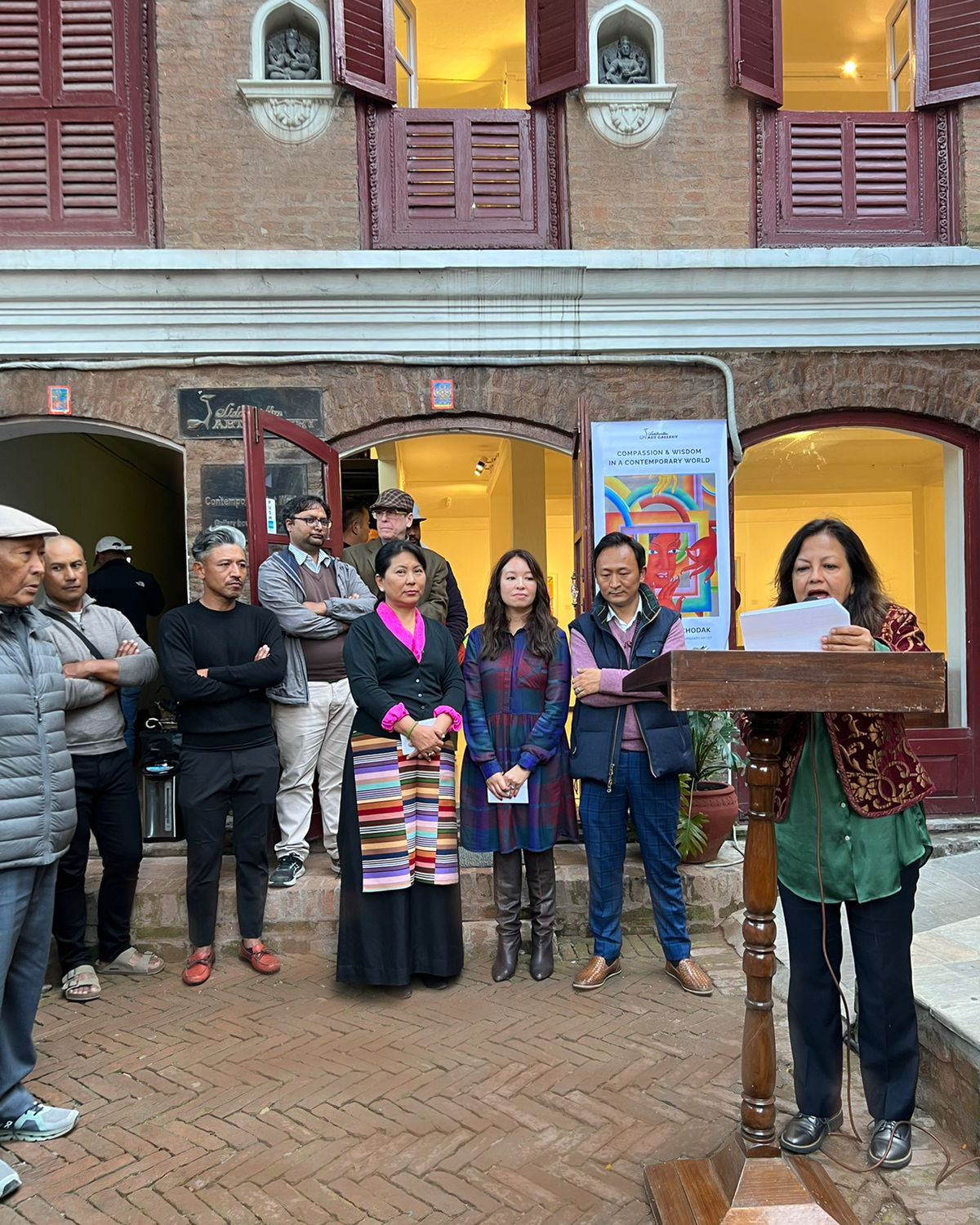
The artist’s use of feminine forms in his art carries symbolic weight. It’s not merely a representation of women but an embodiment of the divine feminine—a force that brings forth wisdom, nurturing and intuition. The figures in his paintings become conduits of spiritual energy, inviting viewers to recognise and honour the sacred within themselves.
In his artistic realm, the presence of dualities is a celebration rather than a conflict. “The interplay between the masculine and feminine is not about opposition but collaboration,” he shares as we stand before one of his many paintings in the gallery. This duality represents oneness, dissolving distinctions and borders through introspection on interconnectedness.
His stay in Dharamsala, India, had a significant impact on his artistic development and enabled him to infuse his artwork with such profound meaning. Not just that, the long-term residency became the catalyst for a significant decision—to embrace a career as a Tibetan contemporary artist. From 2009 to 2015, he resided at Dalai Lama’s Palace annexe quarter in Dharamsala. Recognising the imperative of preserving and reinventing Tibetan and Himalayan arts, he embarked on a journey to enrich the global art scene, particularly within the broader context of Asia.
Currently rooted in Kathmandu, Chodak practises Buddhist philosophy and spiritual practices. He is also accompanying and assisting several long-term personal retreats at the residence and pilgrimage sites in India and Nepal. His studio has become a space where ancient techniques intertwine with contemporary expressions, creating a dynamic dialogue that transcends temporal confines.
His ongoing exhibition, which will continue till December 22, invites art enthusiasts not only to appreciate the aesthetics but to engage in a profound exploration of compassion, wisdom and the interconnected dance of existence.
As patrons and viewers traverse the gallery, they are not mere spectators; they become participants in a journey that bridges ancient philosophies with the pulse of contemporary life. Chodak’s emergence not only as an artist but also as a storyteller weaves the tales that resonate across cultures and time periods.




 18.12°C Kathmandu
18.12°C Kathmandu
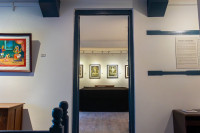
%20(1).jpg&w=200&height=120)
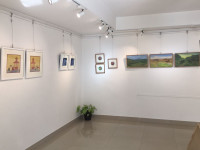
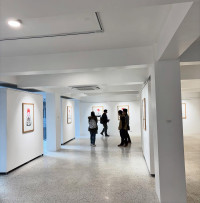
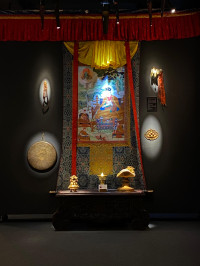
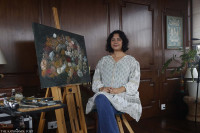
%20(1).jpg&w=300&height=200)
